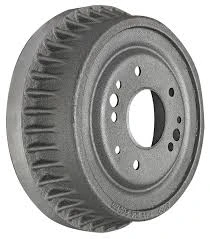
-
 Afrikaans
Afrikaans -
 Albanian
Albanian -
 Amharic
Amharic -
 Arabic
Arabic -
 Armenian
Armenian -
 Azerbaijani
Azerbaijani -
 Basque
Basque -
 Belarusian
Belarusian -
 Bengali
Bengali -
 Bosnian
Bosnian -
 Bulgarian
Bulgarian -
 Catalan
Catalan -
 Cebuano
Cebuano -
 Corsican
Corsican -
 Croatian
Croatian -
 Czech
Czech -
 Danish
Danish -
 Dutch
Dutch -
 English
English -
 Esperanto
Esperanto -
 Estonian
Estonian -
 Finnish
Finnish -
 French
French -
 Frisian
Frisian -
 Galician
Galician -
 Georgian
Georgian -
 German
German -
 Greek
Greek -
 Gujarati
Gujarati -
 Haitian Creole
Haitian Creole -
 hausa
hausa -
 hawaiian
hawaiian -
 Hebrew
Hebrew -
 Hindi
Hindi -
 Miao
Miao -
 Hungarian
Hungarian -
 Icelandic
Icelandic -
 igbo
igbo -
 Indonesian
Indonesian -
 irish
irish -
 Italian
Italian -
 Japanese
Japanese -
 Javanese
Javanese -
 Kannada
Kannada -
 kazakh
kazakh -
 Khmer
Khmer -
 Rwandese
Rwandese -
 Korean
Korean -
 Kurdish
Kurdish -
 Kyrgyz
Kyrgyz -
 Lao
Lao -
 Latin
Latin -
 Latvian
Latvian -
 Lithuanian
Lithuanian -
 Luxembourgish
Luxembourgish -
 Macedonian
Macedonian -
 Malgashi
Malgashi -
 Malay
Malay -
 Malayalam
Malayalam -
 Maltese
Maltese -
 Maori
Maori -
 Marathi
Marathi -
 Mongolian
Mongolian -
 Myanmar
Myanmar -
 Nepali
Nepali -
 Norwegian
Norwegian -
 Norwegian
Norwegian -
 Occitan
Occitan -
 Pashto
Pashto -
 Persian
Persian -
 Polish
Polish -
 Portuguese
Portuguese -
 Punjabi
Punjabi -
 Romanian
Romanian -
 Russian
Russian -
 Samoan
Samoan -
 Scottish Gaelic
Scottish Gaelic -
 Serbian
Serbian -
 Sesotho
Sesotho -
 Shona
Shona -
 Sindhi
Sindhi -
 Sinhala
Sinhala -
 Slovak
Slovak -
 Slovenian
Slovenian -
 Somali
Somali -
 Spanish
Spanish -
 Sundanese
Sundanese -
 Swahili
Swahili -
 Swedish
Swedish -
 Tagalog
Tagalog -
 Tajik
Tajik -
 Tamil
Tamil -
 Tatar
Tatar -
 Telugu
Telugu -
 Thai
Thai -
 Turkish
Turkish -
 Turkmen
Turkmen -
 Ukrainian
Ukrainian -
 Urdu
Urdu -
 Uighur
Uighur -
 Uzbek
Uzbek -
 Vietnamese
Vietnamese -
 Welsh
Welsh -
 Bantu
Bantu -
 Yiddish
Yiddish -
 Yoruba
Yoruba -
 Zulu
Zulu
how do drum brakes self adjust
How Do Drum Brakes Self-Adjust?
Drum brakes have been a staple in automotive design for decades, providing reliable stopping power for many vehicles on the road. One of the key features of drum brakes is their ability to self-adjust, ensuring optimal performance over time. Understanding how drum brakes self-adjust is crucial for drivers, mechanics, and anyone interested in automotive technology.
The Basics of Drum Brakes
Before diving into self-adjustment, it’s essential to understand how drum brakes function. A drum brake system consists of several components, including the brake drum, brake shoes, wheel cylinder, and parking brake. When the brake pedal is pressed, hydraulic fluid from the master cylinder pushes the wheel cylinder, causing the brake shoes to expand outward against the inner surface of the drum, generating friction and slowing down the vehicle.
As the brake shoes wear down due to regular use, the distance between the shoes and the drum increases. Without self-adjustment, this could lead to decreased braking efficiency and a longer pedal travel distance. Fortunately, many modern drum brake systems are equipped with a self-adjusting mechanism to counteract this problem.
The Self-Adjustment Mechanism
Drum brakes typically employ a self-adjusting mechanism that operates automatically under certain conditions. The most common design includes a ratchet and pawl system, which engages during brake applications that involve a significant amount of force, such as when going down a steep hill or during emergency stops.
Here’s how it works As the brake shoes wear down, the self-adjusting mechanism utilizes a small lever that connects the shoes and a ratchet mechanism. When the vehicle brakes are applied firmly, this lever pushes against the ratchet, causing the mechanism to incrementally adjust and pull the shoes closer to the drum. This process raises the shoes to their optimal position for effective braking, compensating for wear without the need for manual adjustments.
Benefits of Self-Adjustment
how do drum brakes self adjust

The self-adjustment feature in drum brakes offers several benefits
1. Enhanced Safety Since the system automatically adjusts, drivers can maintain effective braking performance without the need for frequent manual checks or adjustments. This consistency in braking power enhances overall vehicle safety.
2. Reduced Maintenance Self-adjusting drum brakes require less frequent attention and adjustment, minimizing regular maintenance tasks. This convenience is particularly beneficial for individuals who rely on their vehicles for daily commuting.
3. Prolonged Brake Life By ensuring the brake shoes maintain optimal positioning relative to the brake drum, self-adjusting mechanisms help maximize the life of both components, leading to cost savings over time.
Potential Limitations
Despite their benefits, self-adjusting drum brakes also have limitations. For instance, in some situations, the adjustment mechanism might fail due to corrosion or lack of use, particularly in vehicles that are driven infrequently. It is essential for vehicle owners to be aware of this possibility and to have regular inspections conducted by a professional mechanic to ensure that the self-adjustment feature is functioning correctly.
Conclusion
In summary, the self-adjusting feature of drum brakes plays a vital role in maintaining their performance, safety, and longevity. Understanding how this mechanism works enables vehicle owners to appreciate the engineering behind their braking systems. While self-adjustment offers numerous advantages, regular maintenance is still essential to ensure the overall efficiency and reliability of the braking system. As automotive technologies continue to advance, these systems will undoubtedly evolve, but the fundamental principles of drum brake self-adjustment will remain a critical component in automotive design.
-
What Are Drum BrakesNewsJul.07,2025
-
Understanding Brake Drum MaterialNewsJul.07,2025
-
Semi-Trailer Brake Drum: A Key Component for Extreme Loads and Long-Distance TransportNewsJul.07,2025
-
Drum Brake Pads for SaleNewsJul.07,2025
-
Brake Drums for SaleNewsJul.07,2025
-
Brake Drum ManufacturerNewsJul.07,2025
-
Aluminum Brake Drums: The Future of High-Performance CarsNewsJul.07,2025
